Abstract
3H-actinomycin D, a guanine-binding agent, labels fixed human chromosomes nonrandomly. Actinomycin D added in G2 inhibits secondary constrictions and breaks chromosomes. There is some tendency for label to be concentrated at the ends of chromosomes and near the centromere. Labeling with 3H-thymidine in the late stage of DNA synthesis shows a different pattern and in general lacks the telomeric concentrations. The sites of actinomycin D-induced breaks do not show good correspondence with the sites of actinomycin D label.
Full text
PDF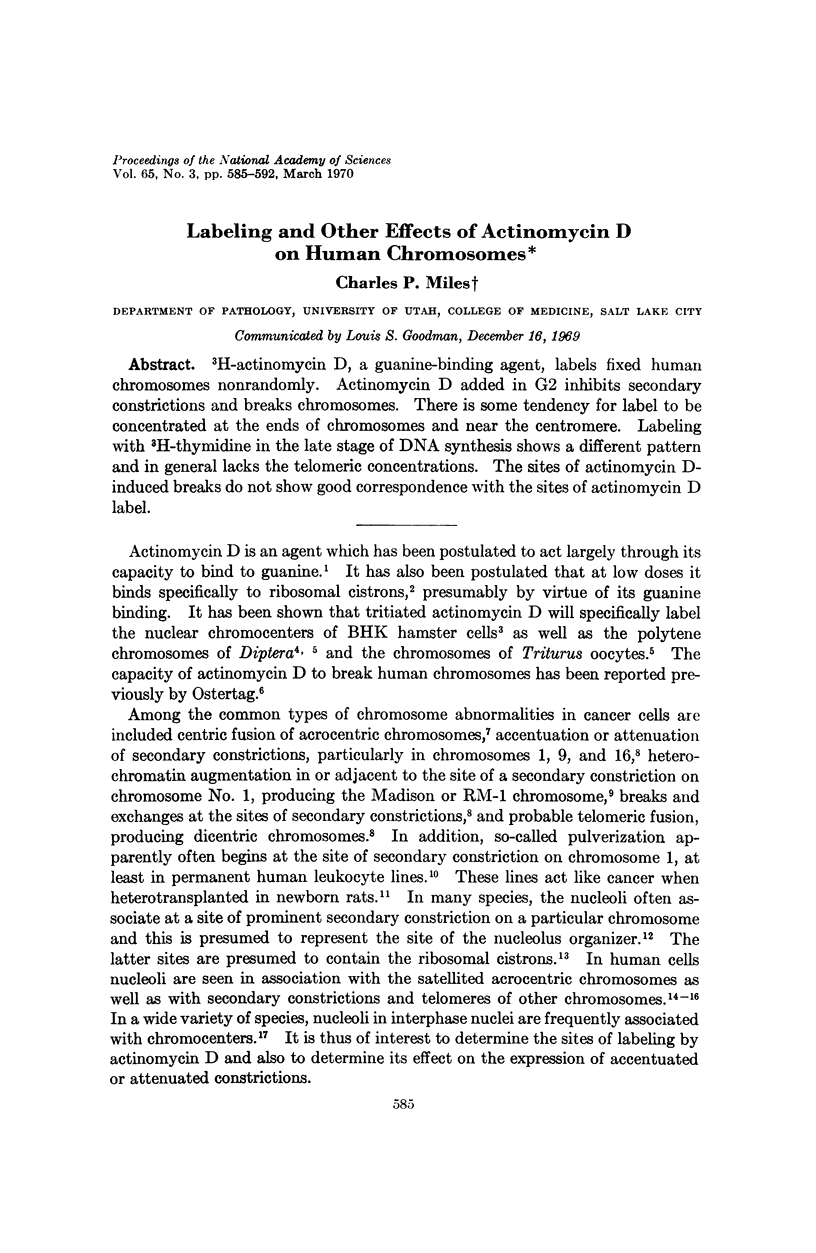
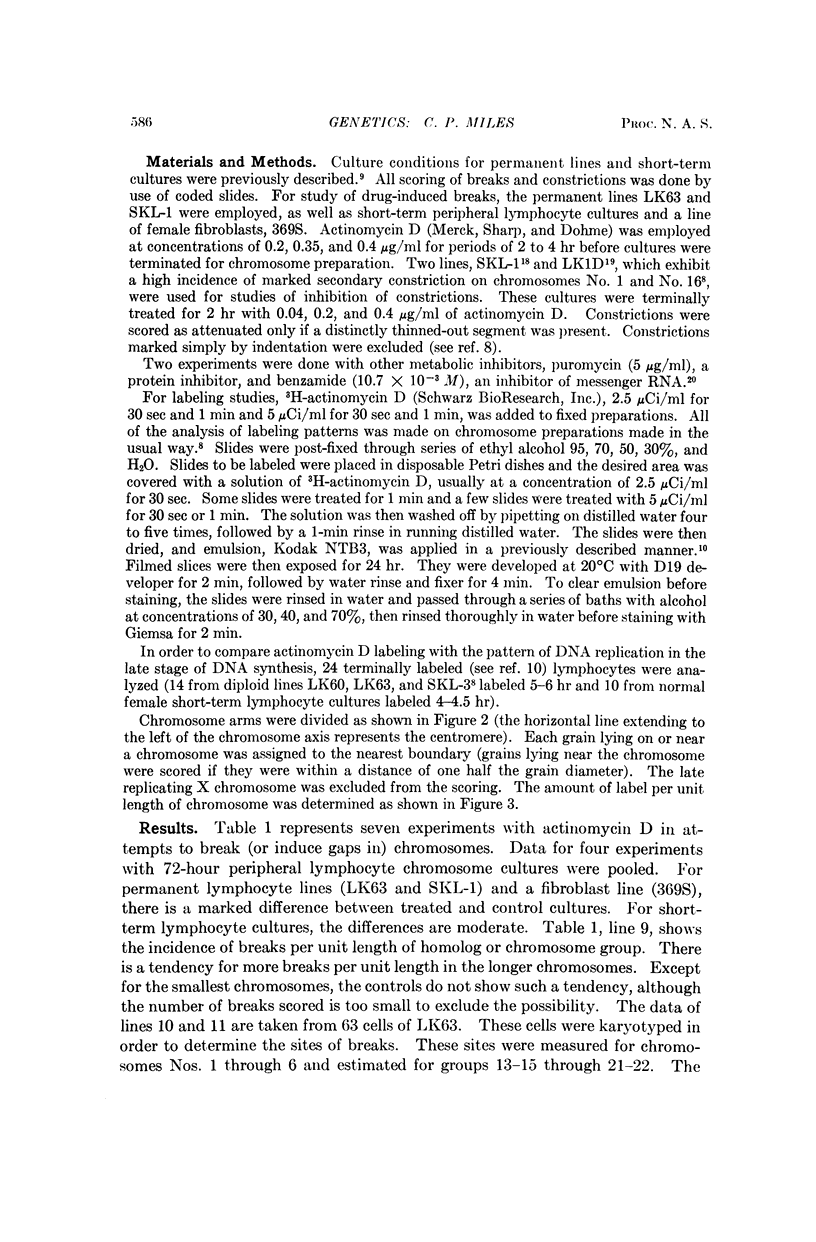

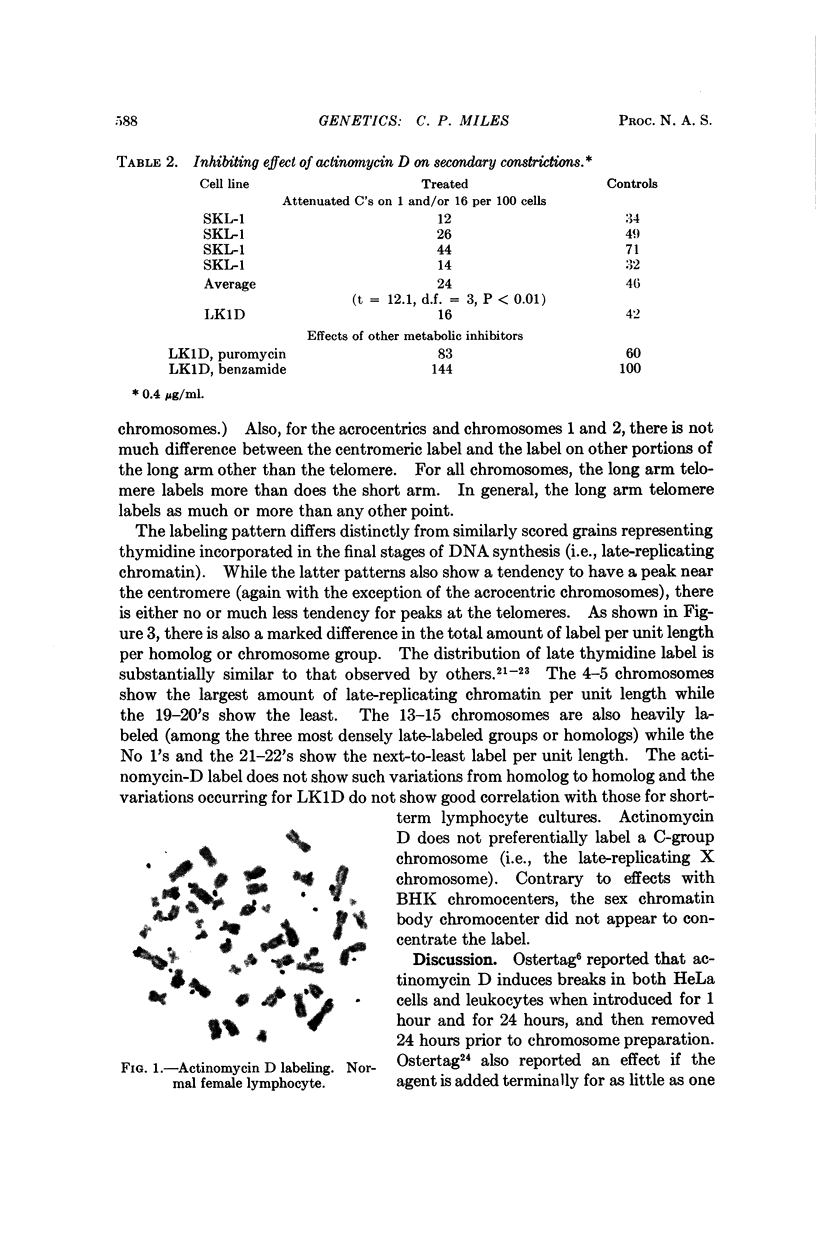
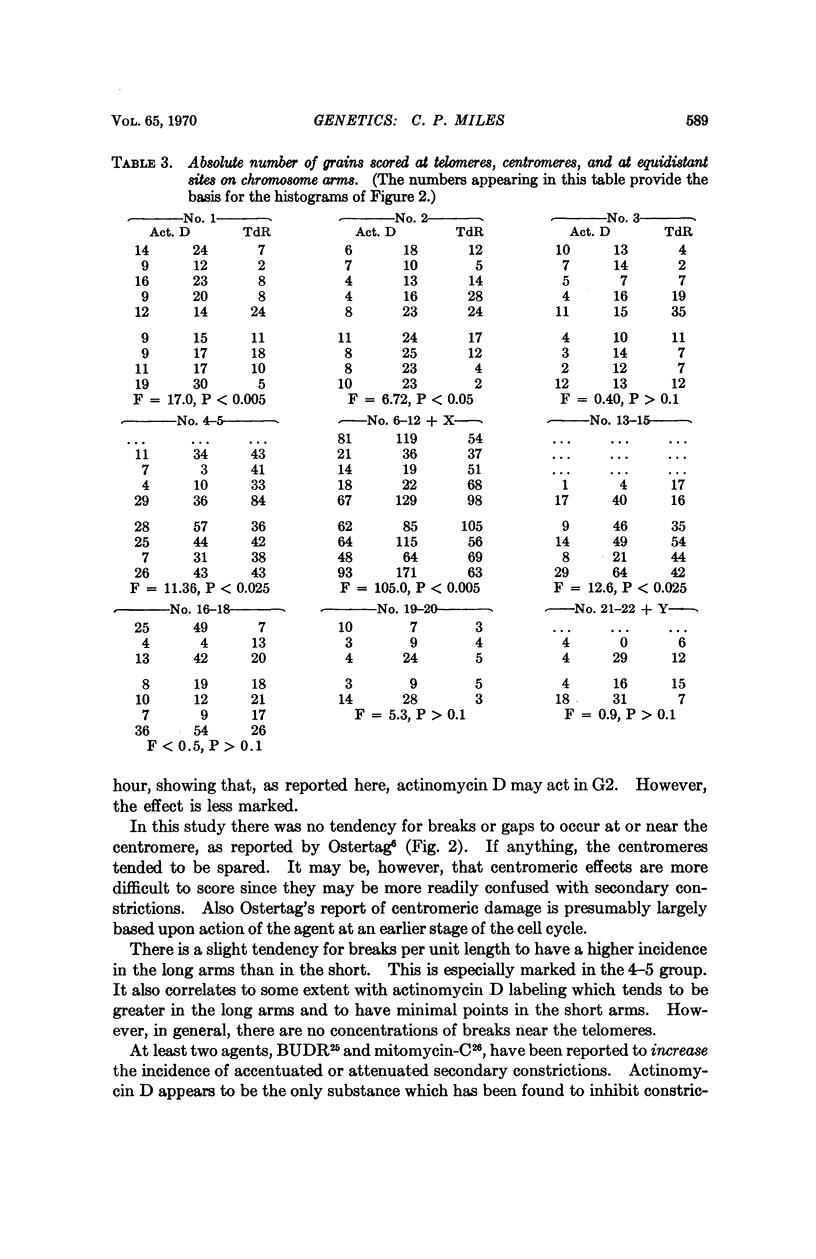
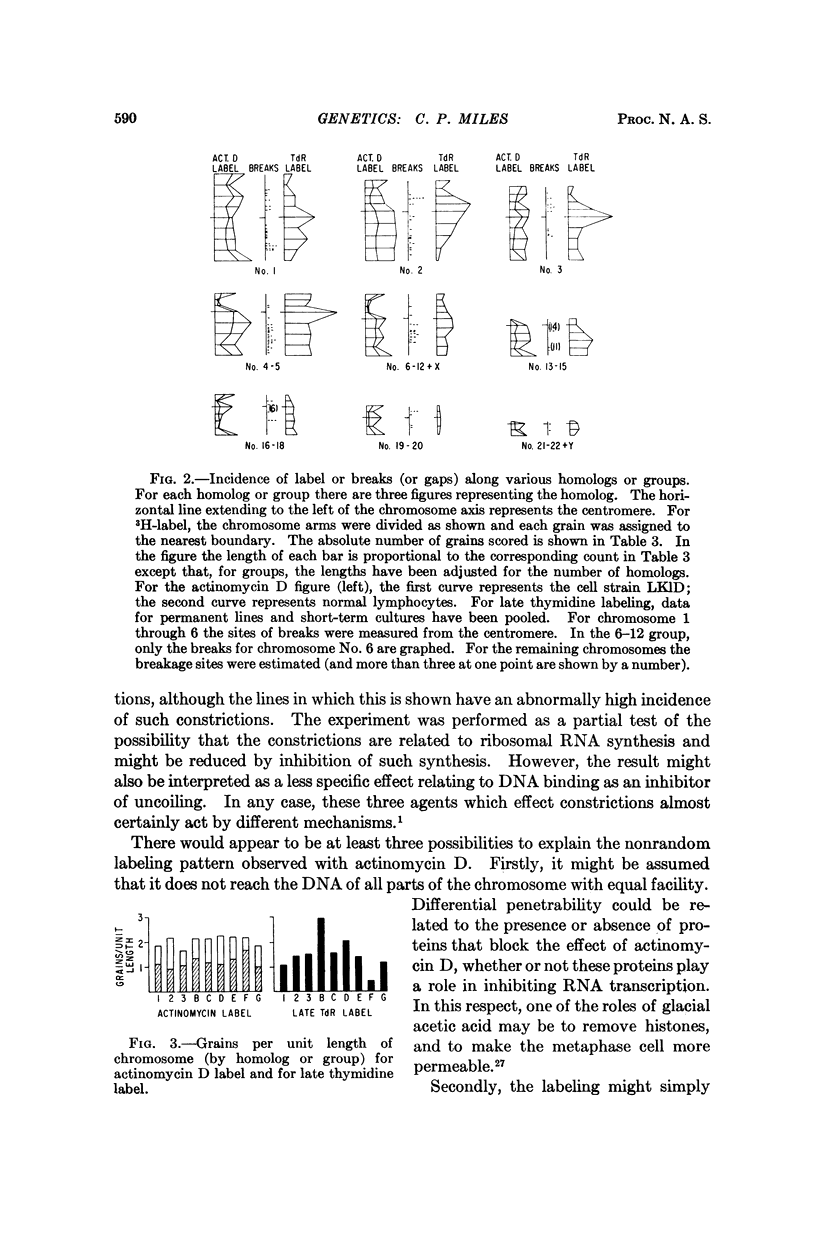
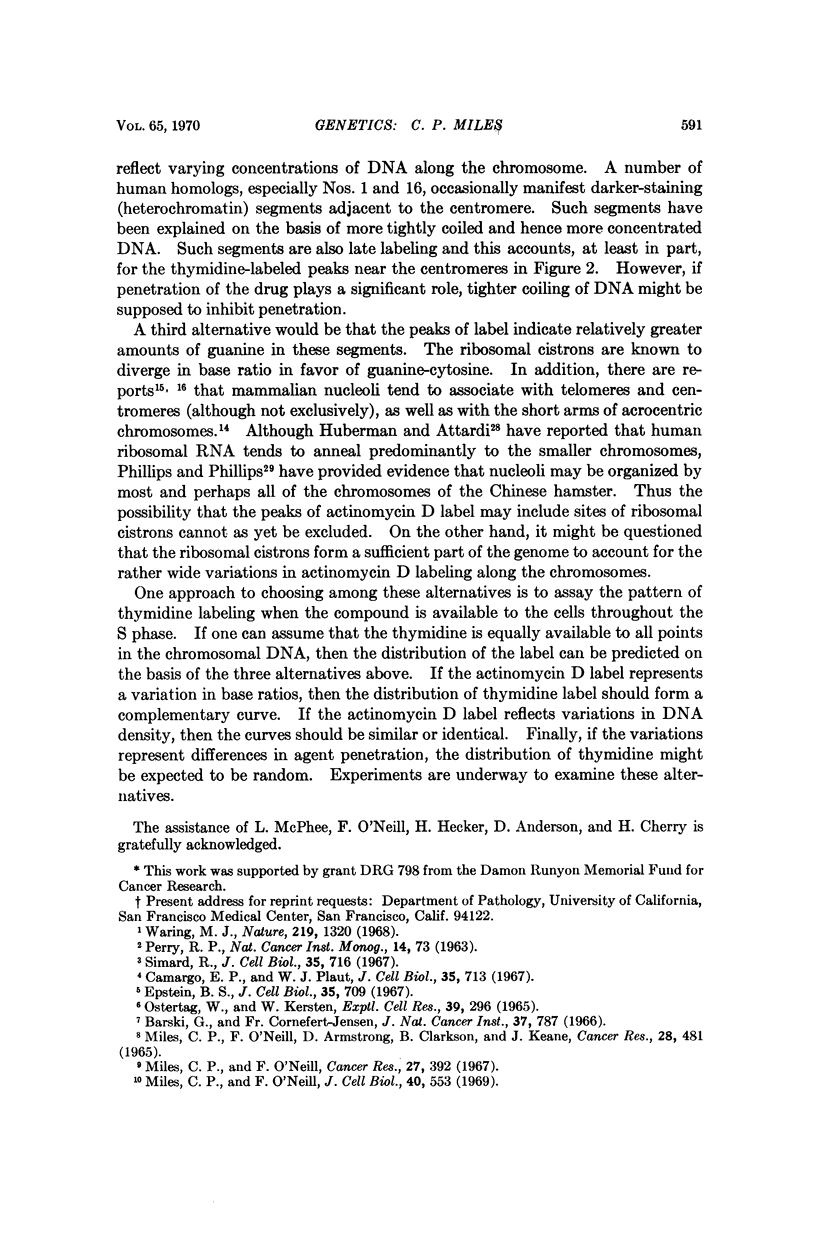
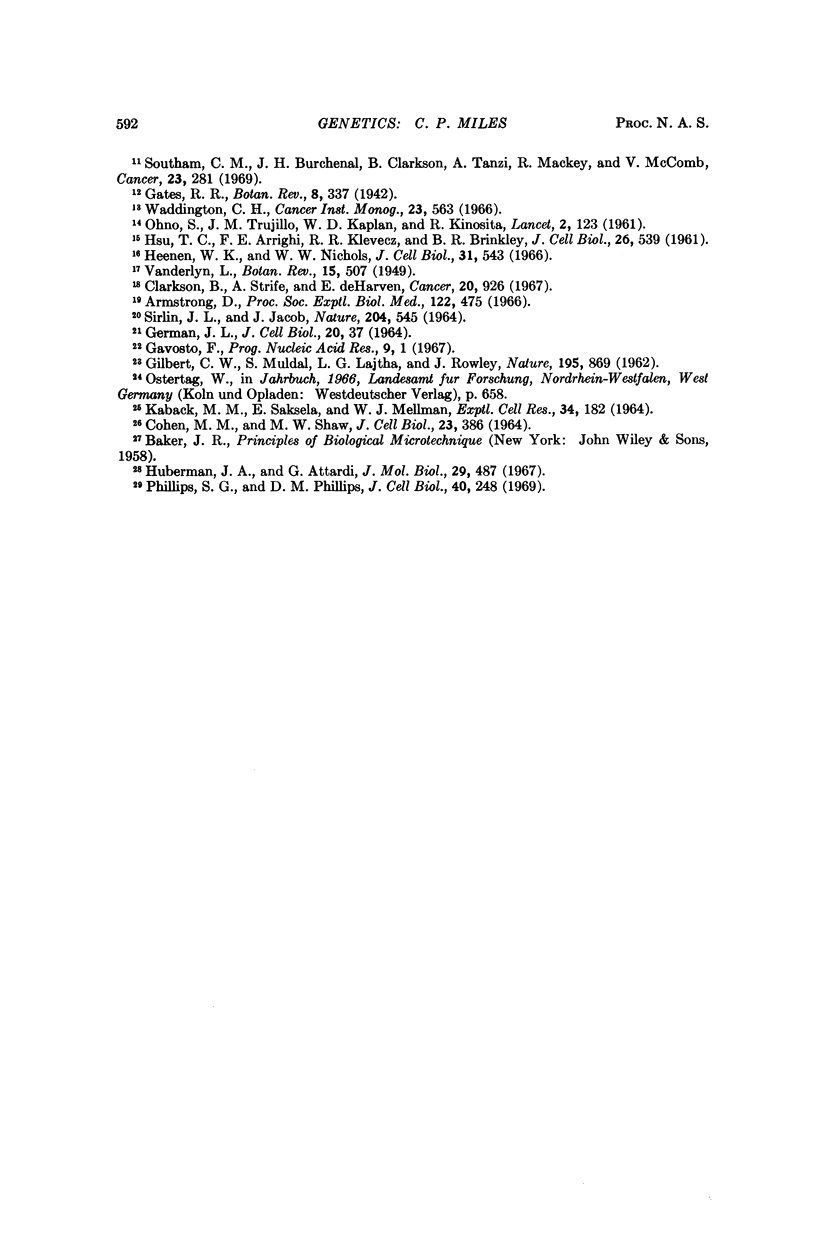
Images in this article
Selected References
These references are in PubMed. This may not be the complete list of references from this article.
- Armstrong D. Serial cultivation of human leukemic cells. Proc Soc Exp Biol Med. 1966 Jun;122(2):475–481. doi: 10.3181/00379727-122-31166. [DOI] [PubMed] [Google Scholar]
- Barski G., Cornefert-Jensen F. Cytogenetic study of Sticker venereal sarcoma in European dogs. J Natl Cancer Inst. 1966 Dec;37(6):787–797. [PubMed] [Google Scholar]
- COHEN M. M., SHAW M. W. EFFECTS OF MITOMYCIN C ON HUMAN CHROMOSOMES. J Cell Biol. 1964 Nov;23:386–395. doi: 10.1083/jcb.23.2.386. [DOI] [PMC free article] [PubMed] [Google Scholar]
- Camargo E. P., Plaut W. The radioautographic detection of DNA with tritiated actinomycin D. J Cell Biol. 1967 Dec;35(3):713–716. doi: 10.1083/jcb.35.3.713. [DOI] [PMC free article] [PubMed] [Google Scholar]
- Clarkson B., Strife A., De Harven E. Continuous culture of seven new cell lines (SK-L1 to 7) from patients with acute leukemia. Cancer. 1967 Jun;20(6):926–947. doi: 10.1002/1097-0142(196706)20:6<926::aid-cncr2820200603>3.0.co;2-4. [DOI] [PubMed] [Google Scholar]
- GERMAN J. THE PATTERN OF DNA SYNTHESIS IN THE CHROMOSOMES OF HUMAN BLOOD CELLS. J Cell Biol. 1964 Jan;20:37–55. doi: 10.1083/jcb.20.1.37. [DOI] [PMC free article] [PubMed] [Google Scholar]
- GILBERT C. W., MULDAL S., LAJTHA L. G., ROWLEY J. Time-sequence of human chromosome duplication. Nature. 1962 Sep 1;195:869–873. doi: 10.1038/195869a0. [DOI] [PubMed] [Google Scholar]
- Hsu T. C., Arrighi F. E., Klevecz R. R., Brinkley B. R. The nucleoli in mitotic divisions of mammalian cells in vitro. J Cell Biol. 1965 Aug;26(2):539–553. doi: 10.1083/jcb.26.2.539. [DOI] [PMC free article] [PubMed] [Google Scholar]
- KABACK M. M., SAKSELA E., MELLMAN W. J. THE EFFECT OF 5-BROMODEOXYURIDINE ON HUMAN CHROMOSOMES. Exp Cell Res. 1964 Mar;34:182–186. doi: 10.1016/0014-4827(64)90193-4. [DOI] [PubMed] [Google Scholar]
- Miles C. P., O'Neill F. 3H labeling patterns of permanent cell line chromosomes showing pulverization or accentuated secondary constrictions. J Cell Biol. 1969 Feb;40(2):553–561. doi: 10.1083/jcb.40.2.553. [DOI] [PMC free article] [PubMed] [Google Scholar]
- Miles C. P., O'Neill F., Armstrong D., Clarkson B., Keane J. Chromosome patterns of human leukocyte established cell lines. Cancer Res. 1968 Mar;28(3):481–490. [PubMed] [Google Scholar]
- Miles C. P., O'Neill F. Chromosome studies of 8 in vitro lines of Burkitt's lymphoma. Cancer Res. 1967 Feb;27(2):392–402. [PubMed] [Google Scholar]
- OHNO S., TRUJILLO J. M., KAPLAN W. D., KINOSITA R. Nucleolus-organisers in the causation of chromosomal anomalies in man. Lancet. 1961 Jul 15;2(7194):123–126. doi: 10.1016/s0140-6736(61)92647-2. [DOI] [PubMed] [Google Scholar]
- Ostertag W., Kersten W. The action of proflavin and actinomycin D in causing chromatid breakage in human cells. Exp Cell Res. 1965 Aug;39(1):296–301. doi: 10.1016/0014-4827(65)90033-9. [DOI] [PubMed] [Google Scholar]
- SIRLIN J. L., JACOB J. SEQUENTIAL AND REVERSIBLE INHIBITION OF SYNTHESIS OF RIBONUCLEIC ACID IN THE NUCLEOLUS AND CHROMOSOMES: EFFECT OF BENZAMIDE AND SUBSTITUTED BENZIMIDAZOLES ON DIPTERAN SALIVARY GLANDS. Nature. 1964 Nov 7;204:545–547. doi: 10.1038/204545a0. [DOI] [PubMed] [Google Scholar]
- Simard R. The binding of actinomycin D-3H to heterochromatin as studied by quantitative high resolution radioautography. J Cell Biol. 1967 Dec;35(3):716–722. doi: 10.1083/jcb.35.3.716. [DOI] [PMC free article] [PubMed] [Google Scholar]
- Southam C. M., Burchenal J. H., Clarkson B., Tanzi A., Mackey R., McComb V. Hetero- transplantation of human cell lines from Burkitt's tumors and acute leukemia into newborn rats. Cancer. 1969 Feb;23(2):281–299. doi: 10.1002/1097-0142(196902)23:2<281::aid-cncr2820230205>3.0.co;2-#. [DOI] [PubMed] [Google Scholar]
- Waring M. J. Drugs which affect the structure and function of DNA. Nature. 1968 Sep 28;219(5161):1320–1325. doi: 10.1038/2191320a0. [DOI] [PubMed] [Google Scholar]



